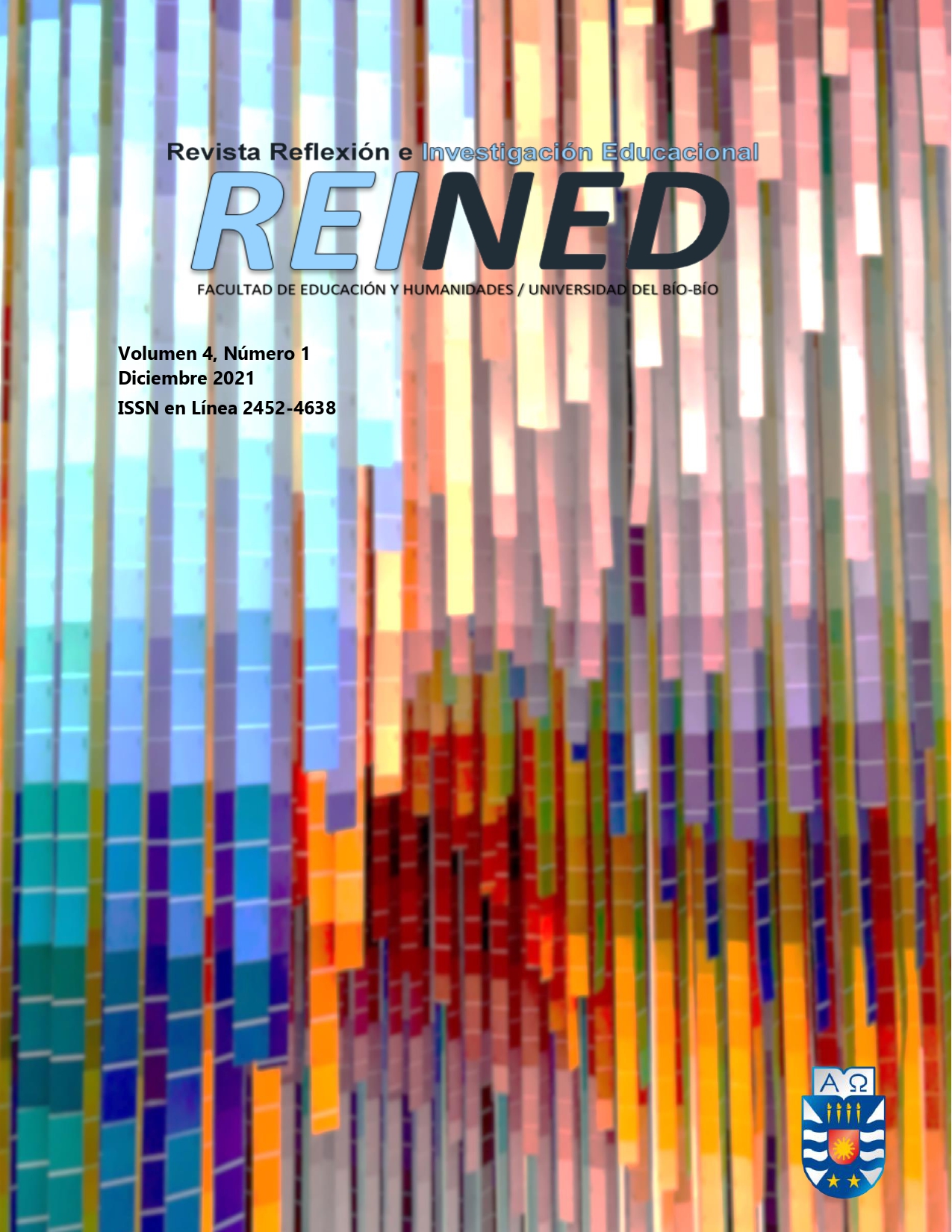Maths for young people with Asperger Syndrome in Secondary Education. Bibliometric analysis (2010 - 2021)
Main Article Content
Abstract
This research is oriented to the bibliometric field providing quantitative and necessary information on the Asperger syndrome understood as a developmental disorder associated with a neurobiological alteration which manifests a set of mental and behavioral characteristics that are part of the autism spectrum disorders (ASD). The objective of the work was to analyze thematic lines and strategies for the teaching and learning process of mathematics of students with Asperger syndrome in secondary education. The search was conducted in the Web of Science, Scopus and Scielo databases, based on 11 papers that met the inclusion criteria indicated in the search strategy. The results indicate an increase in the number of papers in recent years and a high evaluation of methodologies for teaching mathematics to students with Asperger syndrome. The main conclusions allow affirming that, in spite of the scarce number of works on this subject, there is a clear concern for the inclusion of this group of people in the school environment.
Article Details
References
Autismo Diario. (2015, 17 febrero). El alumno con autismo o asperger en la educación secundaria. Autismo Diario. https://autismodiario.com/2015/02/16/el-alumno-con-autismo-o-asperger-en-la-educacion-secundaria/
Bae, Y. S., Chiang, H.-M. y Hickson, L. (2015). Mathematical Word Problem Solving Ability of Children with Autism Spectrum Disorder and their Typically Developing Peers. Journal of Autism and Developmental Disorders, 45(7), 2200-2208. https://doi.org/10.1007/s10803-015-2387-8 DOI: https://doi.org/10.1007/s10803-015-2387-8
Bauer S. (2006). Definición del síndrome de Asperger. Mundo Asperger. https://mundoasperger.com/definicion-del-sindrome-de-asperger/#
Bullen, J. C., Swain Lerro, L., Zajic, M., McIntyre, N. y Mundy, P. (2020). A Developmental Study of Mathematics in Children with Autism Spectrum Disorder, Symptoms of Attention Deficit Hyperactivity Disorder, or Typical Development. Journal of Autism and Developmental Disorders. https://doi.org/10.1007/s10803-020-04500-9
Buncher, A., Hord, C., Weaver, K. y Gamel, Z. (2018). Visual representations and verbal schemas: a case study of one student with high‐functioning autism. Journal of Research in Special Educational Needs, 19(2), 79-91. https://doi.org/10.1111/1471-3802.12426 DOI: https://doi.org/10.1111/1471-3802.12426
Casanova, G. W. (1998). La educación matemática ¿Una disciplina científica? Colección Pedagógica Universitaria - Universidad Veracruzana. https://www.uv.mx/cpue/coleccion/No_29_Coleccion.html
Cox, S. K. y Jiménez, B. A. (2020). Mathematical interventions for students with autism spectrum disorder: Recommendations for practitioners. Research in Developmental Disabilities, 105, 103744. https://doi.org/10.1016/j.ridd.2020.103744 DOI: https://doi.org/10.1016/j.ridd.2020.103744
Escovar, E., Rosenberg-Lee, M., Uddin, L. Q. y Menon, V. (2016). The Empathizing-Systemizing Theory, Social Abilities, and Mathematical Achievement in Children. Scientific Reports, 6(1). https://doi.org/10.1038/srep23011 DOI: https://doi.org/10.1038/srep23011
Gevarter, C., Bryant, D. P., Bryant, B., Watkins, L., Zamora, C. y Sammarco, N. (2016). Mathematics Interventions for Individuals with Autism Spectrum Disorder: A Systematic Review. Review Journal of Autism and Developmental Disorders, 3(3), 224-238. https://doi.org/10.1007/s40489-016-0078-9 DOI: https://doi.org/10.1007/s40489-016-0078-9
Hao, G. y Layton, T. L. (2017). Early academic skills in Chinese children with autism spectrum disorders. Speech, Language and Hearing, 21(1), 55-65. https://doi.org/10.1080/2050571x.2017.1329182 DOI: https://doi.org/10.1080/2050571X.2017.1329182
King, S. A., Lemons, C. J. y Davidson, K. A. (2016). Math Interventions for Students with Autism Spectrum Disorder. Exceptional Children, 82(4), 443-462. https://doi.org/10.1177/0014402915625066 DOI: https://doi.org/10.1177/0014402915625066
Lampert-Grassi, M.P. (2018). Trastorno del Espectro Autista. Epidemiología, aspectos psicosociales, y políticas de apoyo en Chile, España y Reino Unido. Biblioteca del Congreso Nacional de Chile. Recuperado de http://www.bcn.cl/asesoriatecnicaparlamentaria/detalle_documento.html?id=73170
Martos, J. y Pérez, J. M. (2006). El síndrome de Asperger (12/2006 ed.). Comunidad de Madrid, Dirección General de Promoción Educativa. http://www.madrid.org/bvirtual/BVCM001660.pdf
Macmillan, C. M., Pecora, L. A., Ridgway, K., Hooley, M., Thomson, M., Dymond, S., Donaldson, E., Mesibov, G. B. y Stokes, M. A. (2021). An Evaluation of Education-Based Interventions for Students with Autism Spectrum Disorders Without Intellectual Disability: A Systematic Review. Review Journal of Autism and Developmental Disorders. Published. https://doi.org/10.1007/s40489-021-00289-0 DOI: https://doi.org/10.1007/s40489-021-00289-0
MINEDUC (2008). Marco para la buena enseñanza de educación parvularia. Santiago, Chile: Ministerio de Educación
MINEDUC (2017, 17 abril). Manual de Apoyo a Docentes: Educación de estudiantes que presentan trastornos del espectro autista - Educación Especial. Educación Especial. https://especial.mineduc.cl/recursos-apoyo-al-aprendizaje/recursos-las-los-docentes/manual-apoyo-docentes-educacion-estudiantes-presentan-trastornos-del-espectro-autista/
MINEDUC (2018). Nueva Guía para la no discriminación en el contexto escolar. Superintendencia de Educación, chile. https://www.supereduc.cl/prensa/nueva-guia-para-la-no-discriminacion-en-el-contexto-escolar/
MINEDUC. (2021). Curriculum Nacional Matemática. Chile. https://www.curriculumnacional.cl/portal/Educacion-General/Matematica/
MINSAL. (2011). Guías Clínicas Ministeriales No - GES. Ministerio de Salud – Gobierno de Chile. https://www.minsal.cl/no_ges_discapacidad_y_rehabilitacion/
Naranjo-Flórez, R. A. (2014). Avances y perspectivas en Síndrome de Asperger. Nova, 12(21), 81. https://doi.org/10.22490/24629448.998 DOI: https://doi.org/10.22490/24629448.998
Oswald, T. M., Beck, J. S., Iosif, A.-M., McCauley, J. B., Gilhooly, L. J., Matter, J. C. y Solomon, M. (2015). Clinical and Cognitive Characteristics Associated with Mathematics Problem Solving in Adolescents with Autism Spectrum Disorder. Autism Research, 9(4), 480-490. https://doi.org/10.1002/aur.1524 DOI: https://doi.org/10.1002/aur.1524
Soto Calderón, R. (2011). La Inclusión Educativa: una tarea que le compete a toda una sociedad. Actualidades Investigativas en Educación, 3(1). https://doi.org/10.15517/aie.v3i1.9007 DOI: https://doi.org/10.15517/aie.v3i1.9007
Toft, G., Liu, C., Menon, J., Schendel, D., Loss, G. y Ehrenstein, V. (2021). Assessment of Educational Attainment and Employment Among Individuals with Autism Spectrum Disorder in Denmark. JAMA Pediatrics, 175(6), 601. https://doi.org/10.1001/jamapediatrics.2021.0124 DOI: https://doi.org/10.1001/jamapediatrics.2021.0124
UNESCO. (2015). Declaración de Incheon y Marco de Acción. http://www.unesco.org/new/fileadmin/MULTIMEDIA/FIELD/Lima/pdf/INCHE_2.pdf
Unir, V. (2020, 28 septiembre). El síndrome de Asperger en el aula. UNIR. https://www.unir.net/educacion/revista/asperger-en-el-aula/

